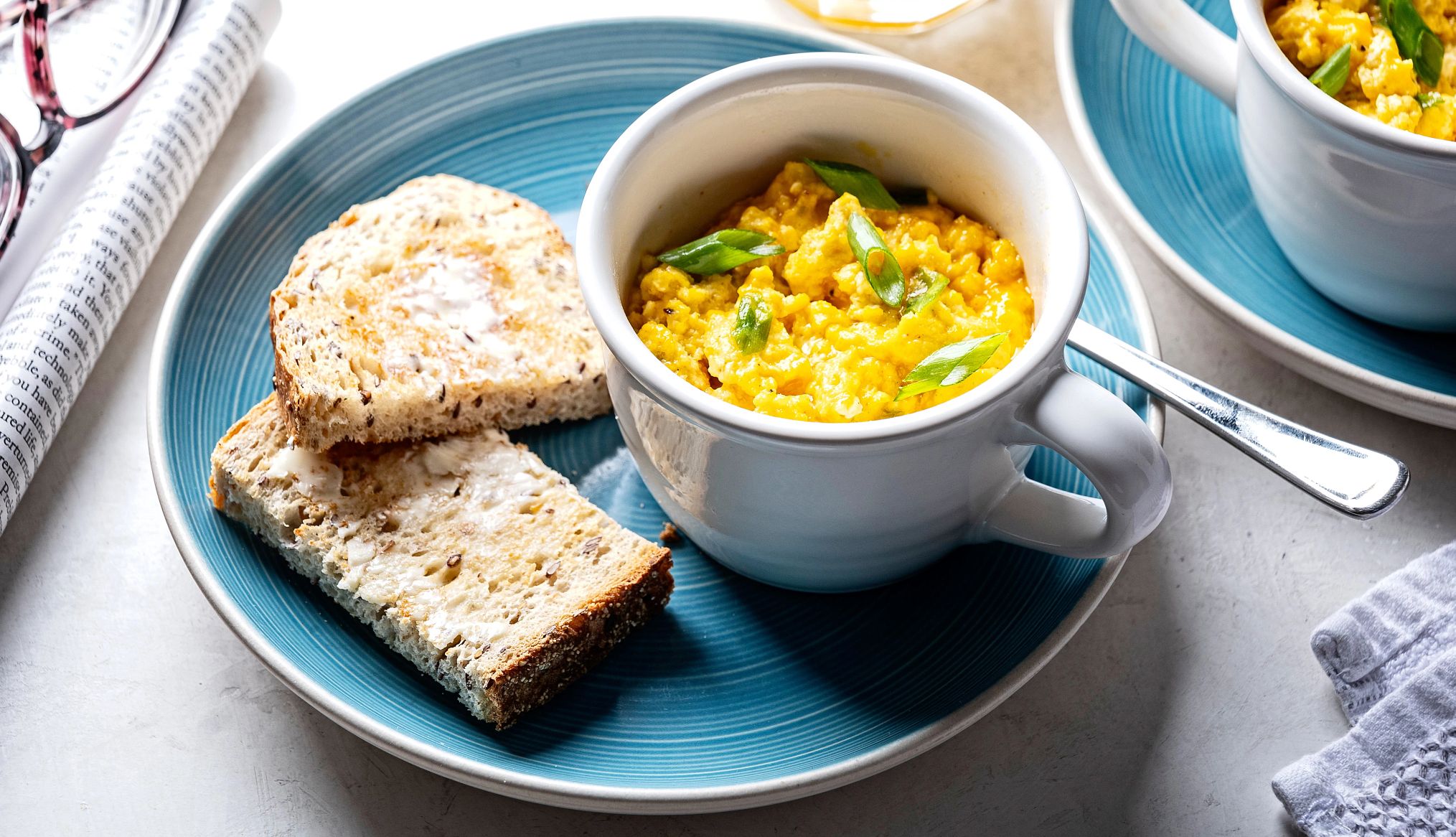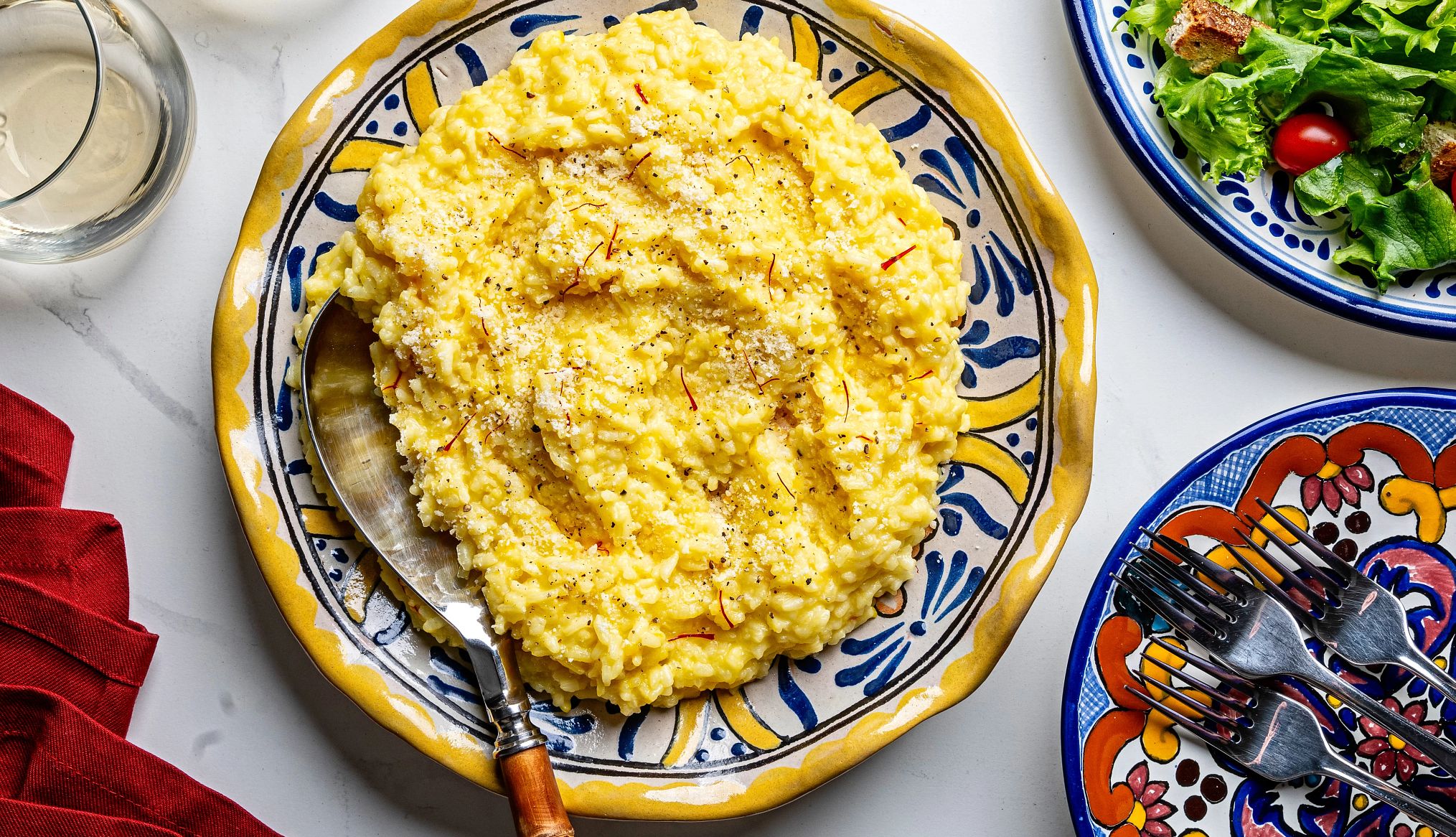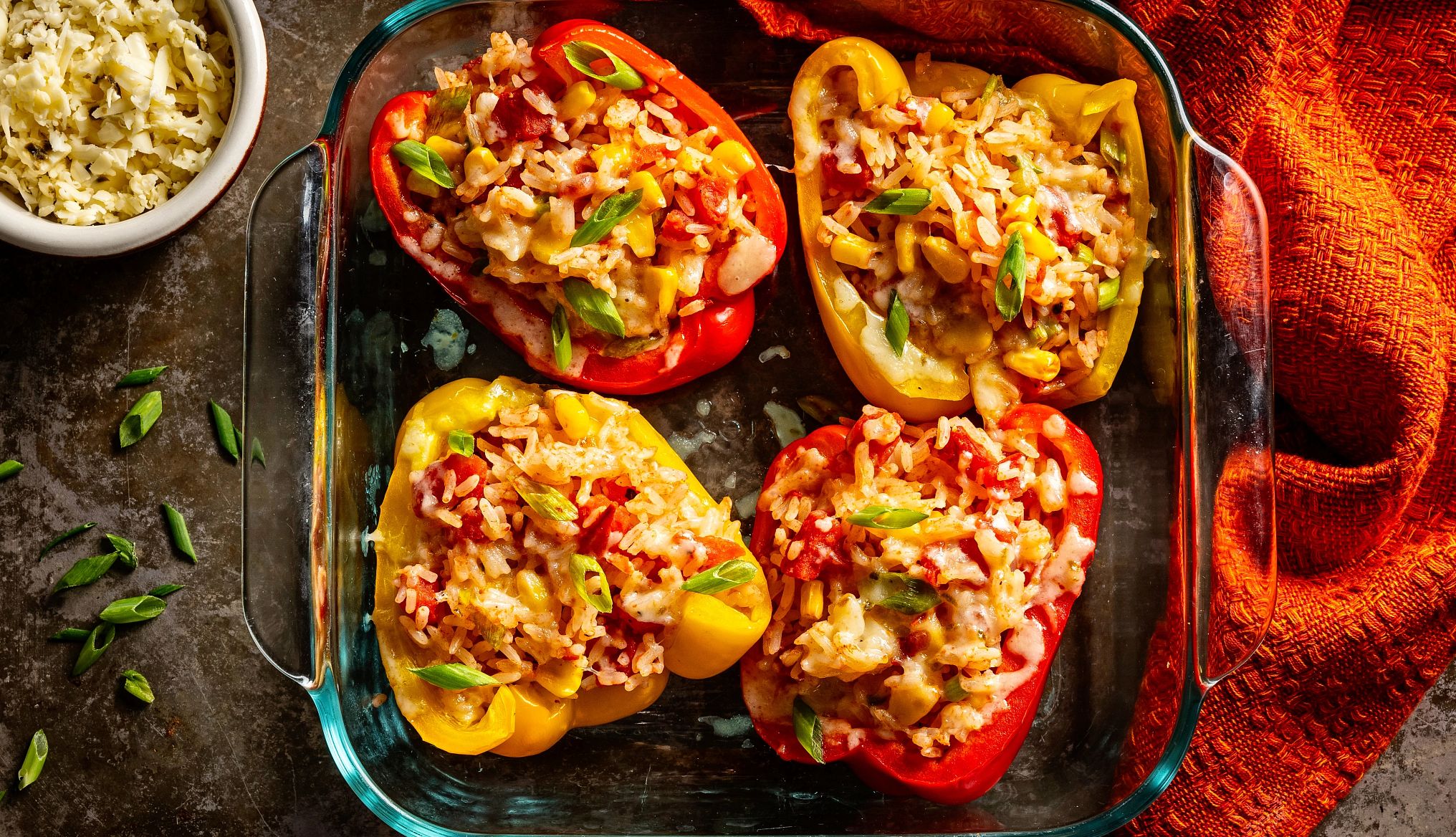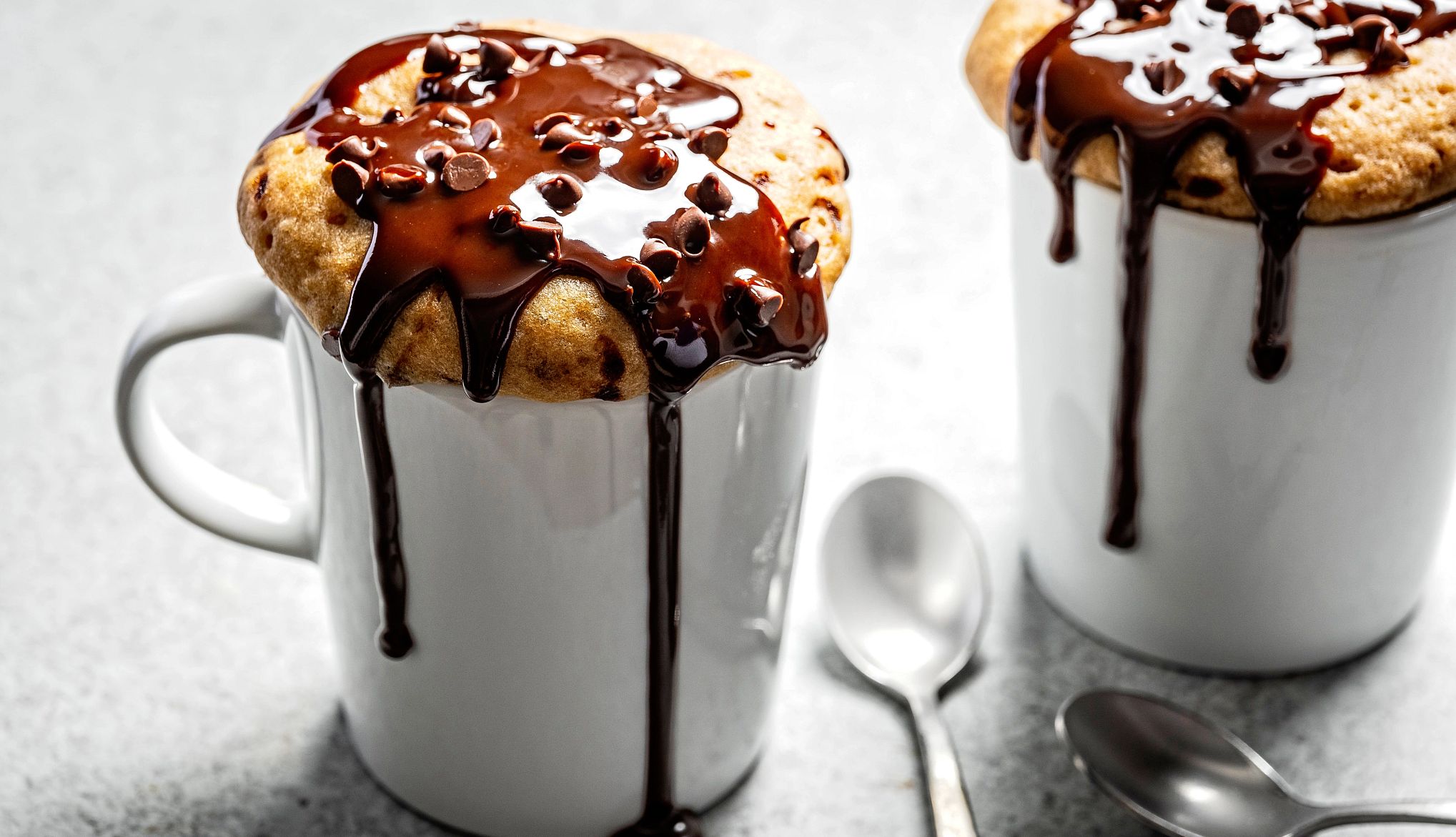AARP Hearing Center


The Michelin chefs among us might raise an eyebrow (or even two) at the thought of using the microwave for more than just warming our tea.
But for people looking for a simple solution for cooking meals at home, microwave cooking saves time, hassles and cleanup.
“Even if you love cooking with traditional methods, don’t overlook the benefits of using a microwave oven,” says accomplished home cook and food influencer Pam Stein, 59, of In Pam's Kitchen. She’s spent the past 20 years developing and adapting recipes for microwave cooking after realizing how much of an asset the appliance was to her when it came to making meals.
Stein lays out why you should be cooking more in the microwave and how to do it well. Plus, she offers her six go-to microwave friendly meals, including one sweet treat. Click on what sounds delicious to go straight to the recipes: manicotti | cheesy scrambled eggs | nutty Brussels sprouts | saffron risotto | stuffed peppers | café au lait mug cake
The benefits of microwave cooking
Ideal for saving space. “This makes (microwaves) an ideal tool for those individuals residing in small space environments, such as a dorm room, small apartment, or RV,” Stein says.
Safety first. Microwaves lack hot burners or flames, making them a safer option.
Uses less energy than ovens. They also use less energy than a traditional range, which can translate to energy bill savings, Stein adds.
Little fat or oil needed. Microwave cooking requires little fat or oil, so meals made this way can be a potentially healthier alternative for people on a low or no-fat diet.
What to know before you get started
Water is a must. “Water is the key to microwave cooking,” she says. “The oven causes the water particles in food to vibrate so quickly that heat is produced. It is this generated heat which cooks your food.”
Microwaves don’t do crispy. One of the most common problems is overcooking, which can alter foods’ taste and texture, making it dry or rubbery. Microwaves are also not the best at preparing crispy and browned foods, she says.
“Cooking from the inside out and using water particles to cook, it becomes more difficult for the oven to produce a crispy brown texture,” she explains.
Know your microwave wattage. Make sure you know the power level and wattage of the microwave oven used in your recipe, Stein says. “A recipe designed for 5 minutes in a 700 watt microwave will be overcooked in your 1000 watt microwave without a time adjustment,” she says.
Use microwave safe containers/plastic wrap. Be sure to cook foods in microwave-safe containers that won’t warp or melt — oval and round glass or ceramic plates and bowls work best (squares and rectangular vessels can build up heat in their corners and prevent even heat distribution, Stein says).
Any plastics used in the microwave should be labeled microwave safe so they don’t melt or leak chemicals, like BPA, into food. And always vent lids slightly in order to avoid steam build up, remembering to use oven mitts when handling hot dishes.
If you’re using plastic wrap instead of a lid, be sure to use only microwave safe plastic wrap free of harmful chemicals, Stein advises.
Use a turntable. Also, use a turntable or rotate your food during cooking to ensure it is evenly cooked.
Leave these foods off your microwave menu. Fish has a tendency to dry out, says Stein, and leafy greens like kale in spinach are high in minerals that replicate metal, which can cause sparks.





































































More From AARP
A Touch of Salt in Your Tea Is Officially Not a Thing
U.S. professor causes an uproar by suggesting salt in tea would improve the taste
3 Berry Pies That Honor Summer
Sweet blueberry, blackberry and strawberry options are winners
Take Your Tastebuds on a Tantalizing Mediterranean Tour
Whip Up sheet pan gnocchi, green pea hummus, and roasted chicken and potatoes
Recommended for You